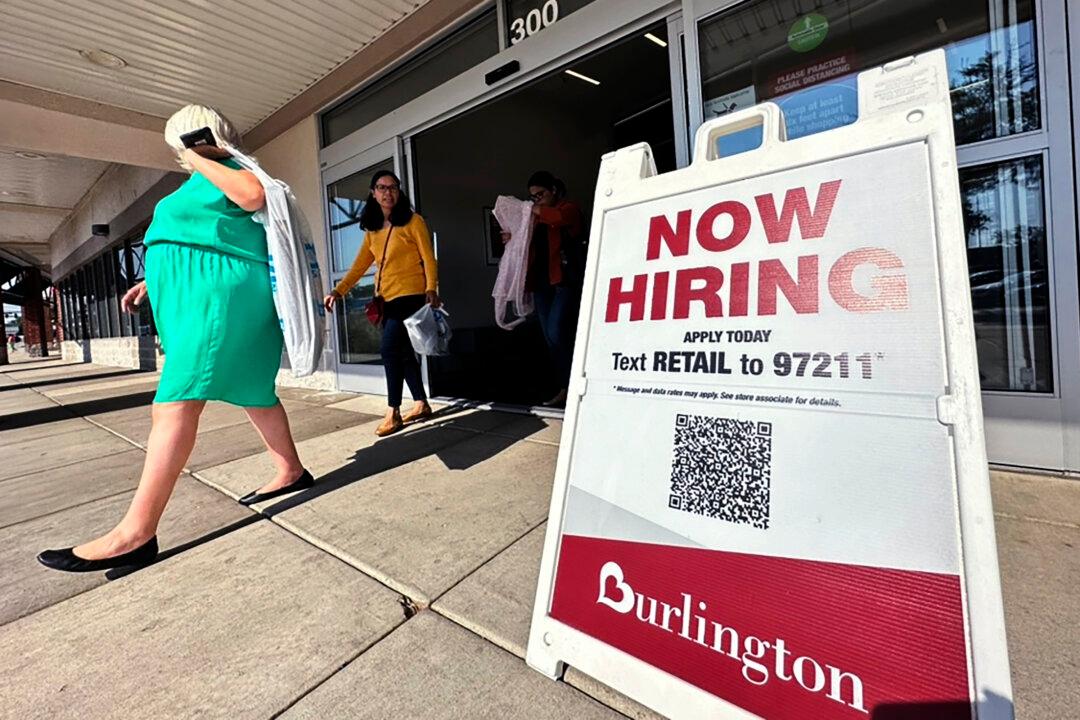The U.S. economy added a larger-than-expected number of new jobs at 275,000 in February as the labor market continues to defy economists’ expectations of a slowing market.
According to the Bureau of Labor Statistics (BLS), the unemployment rate rose to 3.9 percent last month, up from 3.7 percent in January. This was higher than market forecasts of 3.7 percent.
Average hourly earnings rose 0.1 percent monthly, below the consensus estimate of 0.3 percent. On a year-over-year basis, average hourly earnings eased to 4.3 percent.
The labor force participation rate was unchanged at 62.5 percent, while average weekly hours increased to 34.3 from 34.2.
Health care and the government were the top job creators last month, adding 67,000 and 52,000 new jobs, respectively. This was followed by food services and drinking places (42,000), social assistance (24,000), and construction (23,000).
Manufacturing lost 4,000 positions.
The number of people working multiple jobs was little changed at 8.259 million. People employed part-time for economic reasons was flat at 4.4 million. The number of individuals not in the labor force who want a job little changed at 5.7 million.
There was further divergence between full- and part-time employment.
Full-time workers fell by 187,000, while part-time workers rose by 51,000. Over the past year, the U.S. has created more than 900,000 part-time jobs and erased roughly 285,000 full-time positions.
Once again, revisions were a major facet of the February jobs report.
In January, the BLS initially reported that the economy added 353,000 positions. The agency later revised it to 229,000, a decrease of 124,000. This means there have been downward revisions in 10 of the last 12 months.
Average hourly earnings were adjusted down from 0.6 percent to 0.5 percent monthly. They were also changed lower year-over-year, from 4.5 percent to 4.4 percent.
“I think the big news here is that the January number, which was a huge feat, was revised down significantly,” said Lauren Saidel-Baker, an economist with ITR Economics, during an interview with The Epoch Times. “All of this is directionally showing a little bit of cooling in the labor market.”
Market Reaction
The financial markets opened up after the latest labor data.U.S. Treasury yields remained in the red across the board, with the benchmark 10-year yield sliding toward 4.4 percent.
Analysts believe that the recent employment figures will allow the Federal Reserve to stay on its tightening path without veering of course.
“Job creation is strong, and unemployment is barely budging from the lows,” said Giuseppe Sette, the president of investment research firm Toggle AI. “All in all, this employment report will push the Fed to keep its course and leave rates unchanged: this is not an economy in need of a rate cut. CPI [Consumer Price Index] in four days might confirm this view, or provide more nuance.”
Bryce Doty, the senior vice president and senior portfolio manager at Sit Fixed Income Advisors, conceded that the labor numbers were “not as good as it seems.”
“While jobs were higher than expected, so were the large revisions downward for the prior two months,” Mr. Doty said in a note. “The rising unemployment rate also indicates some underlying weakening in the labor market. It appears that net of the revisions, more people lost their jobs than the number of people who got jobs.”
Ms. Saidel-Baker noted that the magnitude of the January jobs report had pushed the timing of the first Fed rate cut, so the latest revisions “are important to consider.”
A Flurry of Labor Data
The Bureau of Labor Statistics published the results of its Job Openings and Labor Turnover Survey (JOLTS) on March 6. The report found that the number of employment vacancies slipped by 26,000 from a downwardly revised 8.89 million.Job quits fell by 54,000 to 3.385 million, the lowest level since January 2021.
Andrew Crapuchettes, the CEO of RedBalloon, says these numbers indicate that the labor supply is running dry.
He alluded to several trends prevalent throughout the marketplace, including a low birth rate, minimal legal immigration, and Baby Boomers exiting the workforce.
“All of these factors are making it really hard to find good workers,” Mr. Crapuchettes told The Epoch Times. “Finding good workers who are going to show up and provide value for the business is really one of the big hurdles for businesses right now.”
Payroll processor ADP announced its National Employment Report that private-sector companies added 140,000 positions last month, slightly below the consensus estimate of 150,000. This was up from 111,000 in January.
In addition, pay gains for job-changers surged for the first time in a year, rising from 7.2 percent to 7.6 percent. Job-stayers rose more than 5 percent.
“Job gains remain solid. Pay gains are trending lower but are still above inflation,” said Nela Richardson, the chief economist at ADP. “In short, the labor market is dynamic, but doesn’t tip the scales in terms of a Fed rate decision this year.”
Layoffs were rampant in February. According to Challenger figures, U.S.-based employers announced 84,638 job cuts, up slightly from 82,307 in the previous month and the highest in 11 months. Moreover, this was the largest number of layoffs for February since 2009.
The layoffs were concentrated in transportation (13,573), technology (12,412), services (8,686), and education (6,102).
“As we navigate the start of 2024, we’re witnessing a persistent wave of layoffs. Businesses are aggressively slashing costs and embracing technological innovations, actions that are significantly reshaping staffing needs,” stated Andrew Challenger, the senior vice president of Challenger, Gray & Christmas.
Department of Labor data reveal that continuing jobless claims, the total number of individuals receiving unemployment benefits, rose to a four-month high of 1.906 million for the week ended Feb. 24.
Recent findings from the RedBalloon-PublicSquare Freedom Economy Index for February showed that many small business employees work two or more jobs. Employers reported that 30 percent or more of their workforce works second and third jobs.
“A robust job musical-chairs” persist as 40 percent of employers said workers are job-hopping. Eleven percent say conditions have stabilized.
For small businesses, crime remains a vital issue, as 70 percent say it has “significantly or slightly increased.” A little more than a quarter (26 percent) report crime neither increasing nor decreasing.
In the study conducted ahead of President Joe Biden’s State of the Union address, 46 percent of small-business owners noted that border security is the most important issue for him to discuss.
Looking ahead to the rest of the year, Ms. Saidel-Baker anticipates further loosening of the U.S. labor market and the GDP growth slowing toward a range of 1.0–1.5 percent.
For Mr. Crapuchettes, the reality of the U.S. labor market in the coming year is a “tightness of good workers.”







